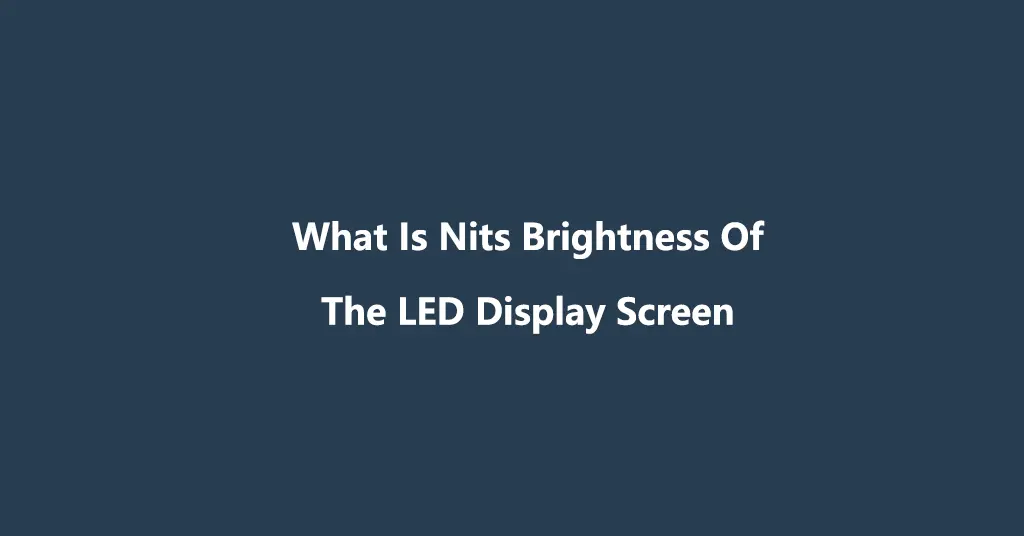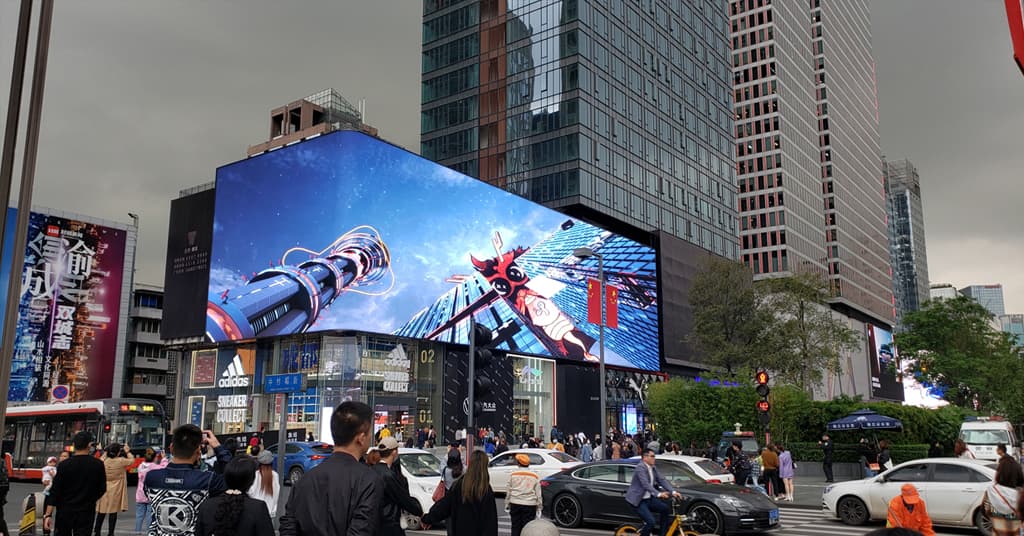What Is Nits Brightness Of the LED Display Screen?
Do you know what is the nit brightness of LED screen? Do you know how to choose the appropriate nit brightness parameter when purchasing LED screen? Is your LED screen project configured with the best nit brightness to make the picture effect more satisfactory? Today, GalaxyAV will take you to learn more about the brightness of LED screen nits.

What is the nit brightness of LED screen?
Nit is the unit of brightness, 1nit=1 cd/m². Brightness refers to the physical quantity of the intensity of light (reflection) on the surface of a luminous body (reflector). The human eye observes the light source from one direction, and the ratio of the light intensity in this direction to the area of the light source “seen” by the human eye is defined as the brightness of the light source unit, that is, the luminous intensity per unit projected area. The unit of brightness is candela/square meter (cd/m2). Brightness is the human perception of the intensity of light.
So we now know: Brightness refers to the degree of lightness and darkness of an object, defined as the luminous intensity per unit area, the unit is nit, 1 nit = 1 candela/square meter, lumen (LM) is the unit of luminous flux.
Different LED screens have different brightness, and the different nit values of these parameters directly lead to very large differences in the vividness, brightness, contrast and overall visual effect of the LED screen. The high dynamic range (HDR) LED screen system can produce more than 4000 nits of brightness, making your images or videos better than ordinary LED screens.

The difference between nits brightness and lumens of LED screen ?
Lumen (Lumen, lm) is a measurement unit of luminous flux, designed to calculate the total light energy produced by a light source per unit time. It can only explain the strength of light energy and has nothing to do with distance.
Nit is a comprehensive measurement index, mainly used to measure the sum of light that the human eye can see. It is affected by factors such as viewing angle and viewing distance.
So the difference between the two is that lumen is an objective data, as long as the total energy emitted by the LED screen is measured. However, nit is a subjective data, and the objective existence of various factors will directly affect the final value of nit brightness. In layman’s terms, the brightness of nits is the display brightness of the LED screen that people can see in a certain sense.
How to accurately measure the nit brightness of LED screen?
Normally, you don’t need to measure the brightness in nits of the LED screen. Because most of the LED screen manufacturers will clearly mark the nit brightness value of the LED screen on the package. In their electronic sample booklet, different types of LED screen panels will have corresponding nit brightness parameter tables for your reference and selection.
Of course, you can also use professional testing software and testing tools to obtain accurate nit brightness values of the LED screen. Such as digital light meter. We can first find the lux value of the LED screen, and then perform relevant professional calculations to obtain the nit brightness value of a specific LED screen.
The ratio of lux to nit brightness is approximately equal to 3.14159. When you get the lux value with a digital illuminance meter, divide the number by 3.14159, and the final value you get is the nit brightness value of the LED screen. The advantage of doing this is to obtain the real nit brightness parameters of the LED screen, avoiding the false standard parameters of the LED screen manufacturer.
Recommended nit brightness of LED screen in use
In the dark, the faint light of a candle can get our attention, but outdoors, the light of a flashlight doesn’t seem to get our attention. This shows that the display effect of the LED screen is greatly affected by the lighting conditions of the external environment. In order to make the outdoor LED screen have a good display effect, we will set the outdoor LED screen much higher than the nit brightness of the indoor LED screen.
For outdoor LED screens, our suggestion is to choose a brightness in the range of 4000-8000 nits. This can effectively avoid the direct impact of outdoor sunlight. For indoor LED screens, we recommend choosing a brightness of 800-1800 nits.
Well, the above is the relevant content about the nit brightness of LED screen, I hope it will be helpful to you when purchasing LED screen. If you have any questions about LED screen panel products and project delivery, please contact our senior technical engineers.
As an LED screen manufacturer with more than 20 years of professional experience, GalaxyAV has made extraordinary achievements in audio-visual system integration. Especially in terms of flexible led screen and dome led screen, we have many successful cases for your reference. If you are interested, welcome to consult us for free.
Others also read the following article
Want to know more about the Audio Visual Solutions?
